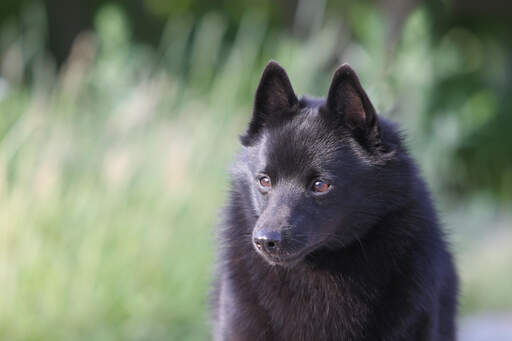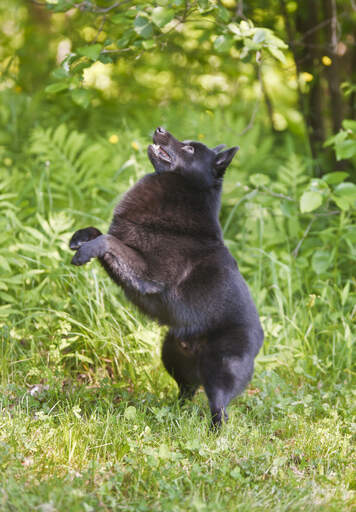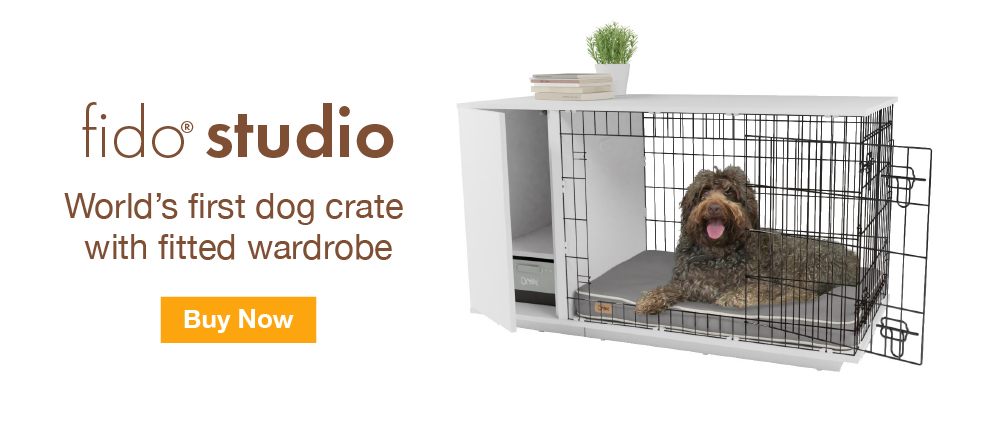Schipperke Dogs








History
The Schipperke dates back to the 16th century, but was only officially recognised later on in the 1880s. Their name is derived from the Dutch word “Scheperke” which means Shepherd. The breed was a common sight on barges and as a result has been given the nickname “Belgian Barge Dog”. They were great at catching rats and other vermin on the boats. Their exact origins remain unknown, though they are believed to be a type of Spitz. They were used as the foundation stick for the Belgian Groenendael.
Behaviour
The Schipperke is a lively and adventurous little breed. They are very intelligent and learn quickly. They also get on well with children and make for a good family pet. They will bark when someone is at the door and sometimes even howl if not taught not to. They seem to form a close bond with their main owner, so it is important to get the whole family involved in training so that everyone can enjoy the company of this delightful little breed. Early socialization in the form of puppy classes will be great for them, if they are not socialized properly they will become protective of their homes which could lead to aggression. They like to be close by and always keep tabs on what everyone is doing. They like to take part in all aspects of family life and don’t fare too well if left alone for long periods of time.
Training should be started early on. As mentioned above, this is an intelligent breed that picks things up quickly. Praise and food rewards all work well when training. Training needs to be consistent and carry on well into adulthood as they can get bored easily and get up to some mischievous behaviour. Activities such as agility and obedience all go down well with this breed. If training is approached correctly you’ll have a wonderful, obedient little companion by your side at all times.
As is the case with many smaller breeds, the Schipperke is an active and curious dog that will need a fair amount of exercise each day to keep them happy. A walk each day and a chance to run about will be ideal for them. Recall can be a bit of a problem so be sure to let them off lead only if you know that you are in a safe area where they can get into any trouble. They enjoy playing with other dogs, but can often forget their size and get themselves hurt when playing with larger breeds. They are sometimes used as therapy dogs as they love human contact and thrive off of the attention.
The Schipperke’s long black coats requires regular grooming, though they don’t tend to shed that much hair. A regular brush to remove dead hairs and to neaten up the coat will be fine. When they are moulting, however, they shed masses of hair and will often look scruffy during this time.
Temperament
Schipperkes are alert and agile dogs. They can be very noisy at times, so early training is very important, and once trained they become reliable watchdogs (rather than dogs that bark at anything and everything!) Early socialization is needed too, to prevent them becoming aggressive - or timid - as adult dogs.
Health Problems
Epilepsy and Canine Hip Dysplasia can sometimes be seen in this breed. They also have a tendency to gain weight easily so tier diets should be watched closely to prevent obesity. Other potential health problems include Legg–Calvé–Perthes disease (degeneration of the femoral head which can cause lameness and joint swelling), luxating patella (dislocation of the kneecap), canine hip dysplasia (CHD), elbow dysplasia, cataracts, progressive retinal atrophy (PRA: degeneration of the retina which can lead to blindness), allergies, hypothyroidism and lysosomal storage disease.
Breed Details
- Status: Common
- Life Expectancy: 12 - 15 years
- Weight: 6 - 20 lbs
- Height: 10 - 13"
- Rare: No
- Coat: Medium - Double
- Grooming Requirements: Once a week
- Town or Country: Either
- Minimum Home Size: Flat
- Minimum Garden Size: No Garden
- Breed Type: Companion Dog
- Size: Small
- Energy Level: High
- Exercise Required: Up to 1 hour










